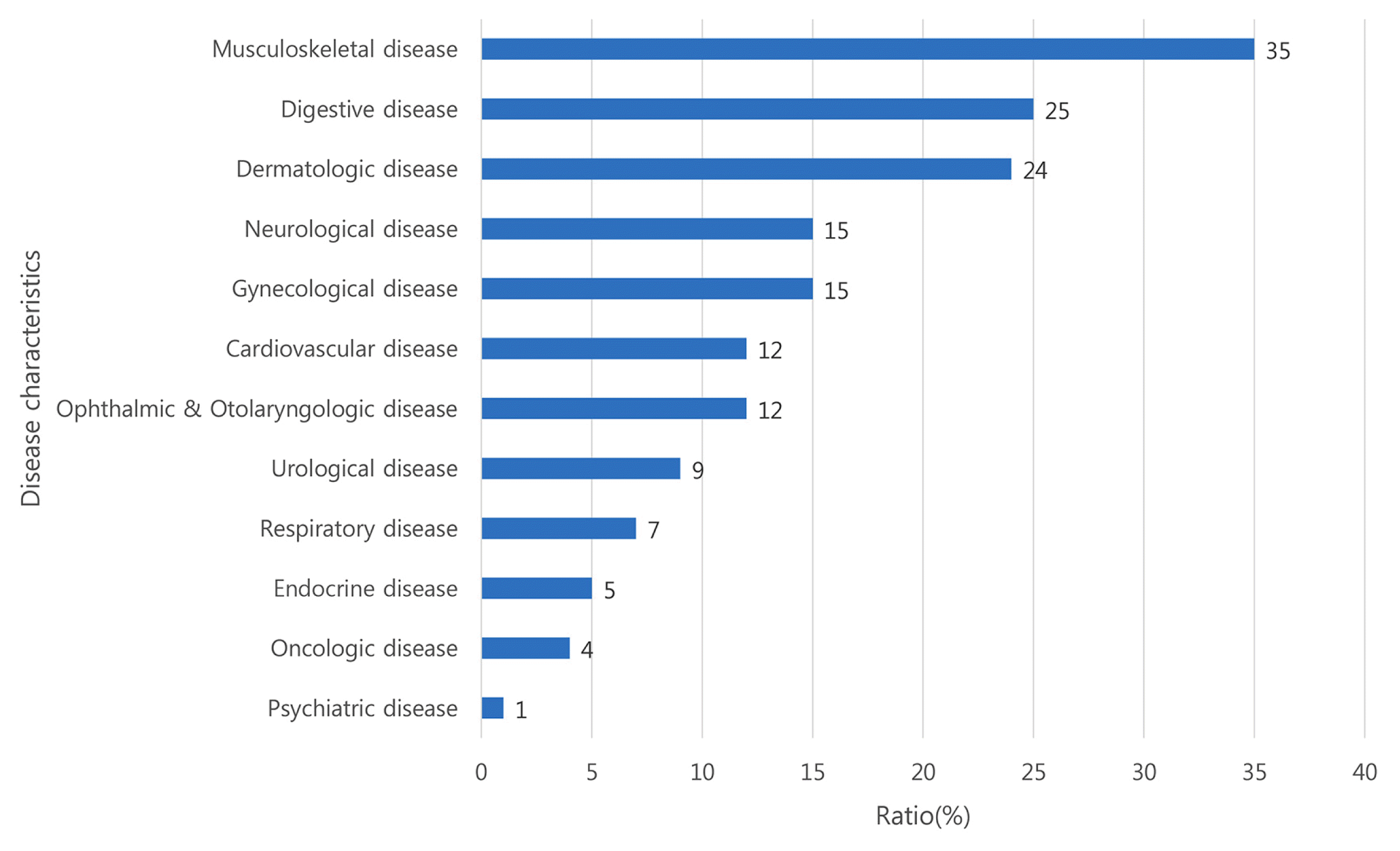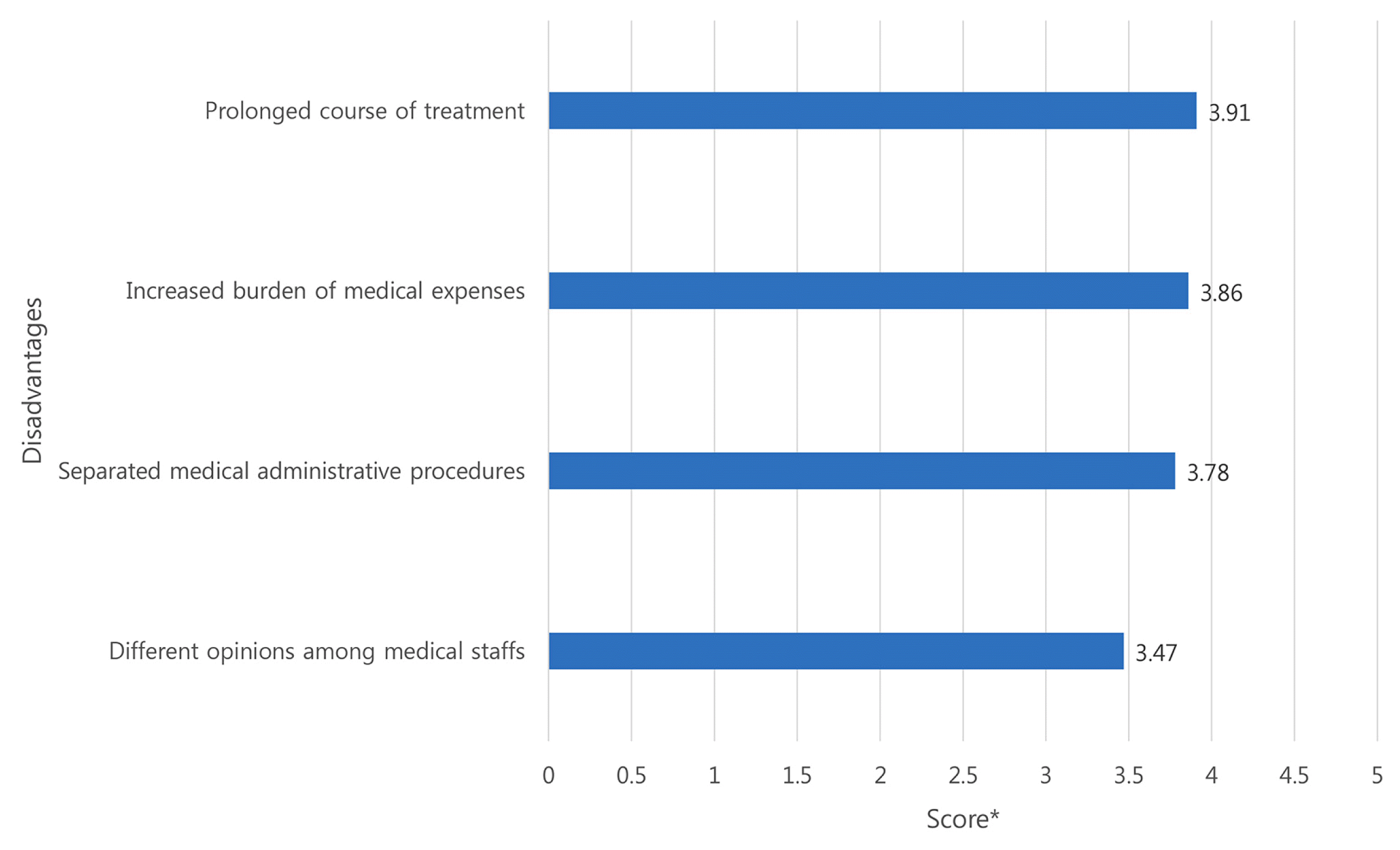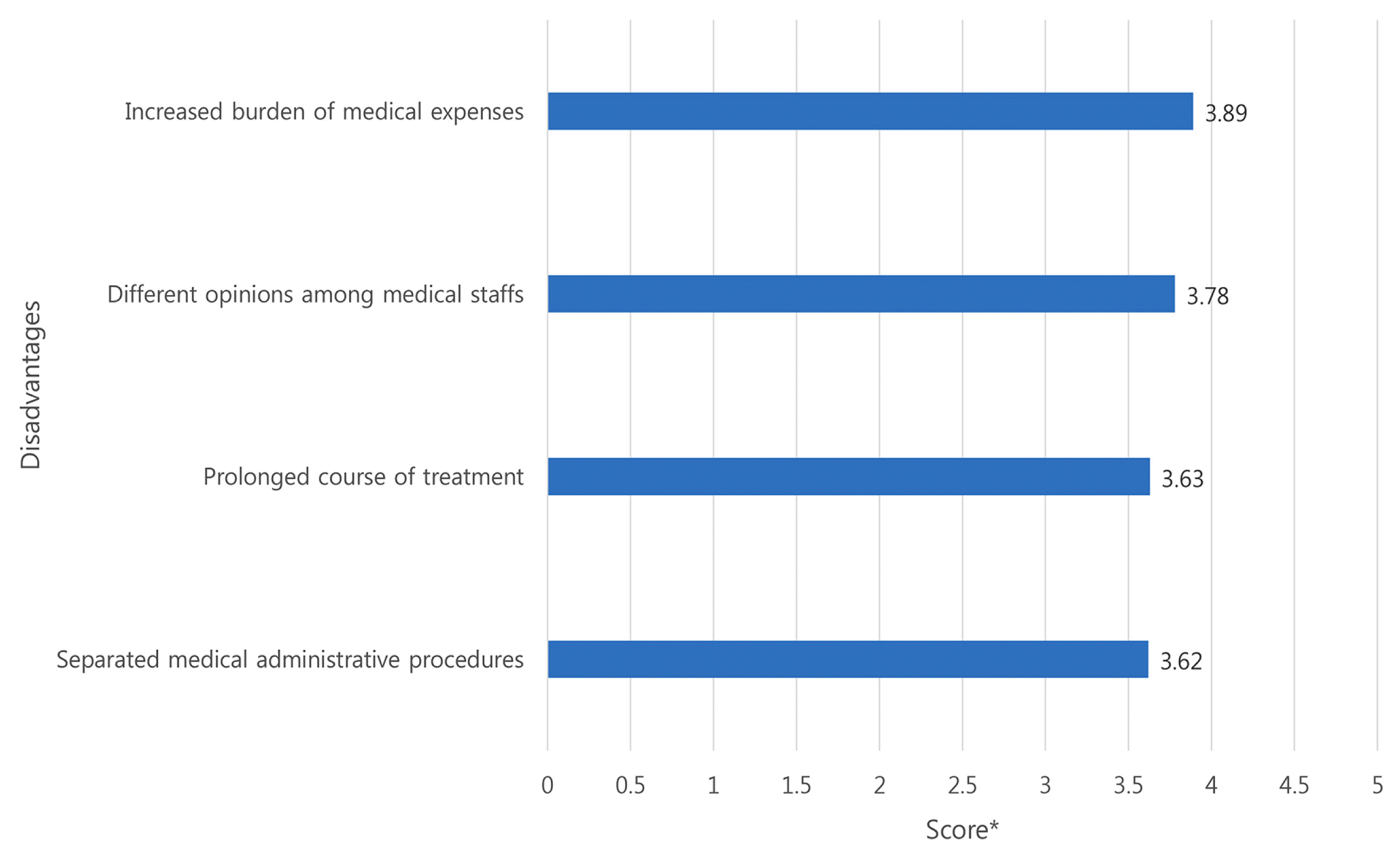A Study on the Perception of Concurrent Use of Western and Korean Medicine Care and Integrated Medical Service in Korea - Targeting tertiary hospital users -
Article information
Abstract
Objectives
Currently, Korea’s medical services are divided into Western medicine and Korean medicine, and people who are not satisfied with the existing treatments are looking for complementary and alternative medicine(CAM). Therefore, this study attempted to confirm patients' perception of the ongoing collaborative treatment and integrated medical service that added CAM to collaborative treatment based on tertiary hospital users. So that we can confirm the expected advantage and disadvantage of integrated medical service system and the necessity of supporting medical expenses for it.
Methods
The survey was conducted on 100 people who experienced tertiary hospital treatment and other 100 people who experienced both tertiary hospital treatment and Korean medicine treatment at the same period. The survey was conducted until the number of respondents in both group reached 100. The survey was conducted through e-mail and was conducted from September 27, 2021 to October 8, 2021.
Results
For the advantages of collaborative treatment ‘increased in psychological stability,’ and for disadvantages ‘longer time spent for treatment’ were the most common. If integrated medical services are implemented in the future, expected advantages include ‘consideration of various treatments.’ and expected disadvantages include ‘increased medical cost.’ The needs to expand support for health insurance for integrated medical services were 75.5% among responders.
Conclusions
We were able to find out the (expected) advantages and disadvantages of the collaborative medical care and the integrated medical system that medical users experienced or expected, also confirmed positive answers to the expansion of health insurance support for the integrated medical system.

Pathological characteristics of people with experience in tertiary care and Korean medicine (multiple choice)(n=100)

Benefits of tertiary care and korean medicine (n=100)
* The average of Likert scale divided into five steps from very much (5) to not at all (1).

Disadvantages of tertiary care and korean medicine (n=100)
The average of Likert scale divided into five steps from very much (5) to not at all (1).

Benefits expected when integrated medical services are established in the future (n=100)
The average of Likert scale divided into five steps from very much (5) to not at all (1).

Disadvantages expected when integrated medical services are established in the future (n=100)
The average of Likert scale divided into five steps from very much (5) to not at all (1).
Acknowledgements
본 연구는 보건복지부의 재원으로 한국보건산업진흥원의 보건의료기술 연구개발사업 지원에 의하여 이루어진 것임(과제고유번호: HI20C1405).

